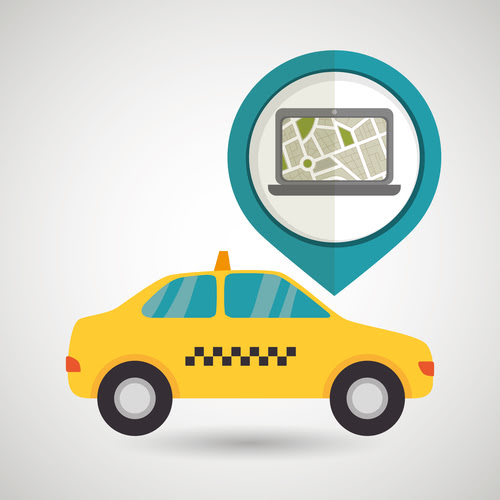For fog, processing and storage happen on the network’s edge, nearer to the knowledge supply, enhancing real-time management. Fog computing is a mediator between hardware and remote servers. It regulates which data should be despatched to the server and which can be processed locally. In this manner, fog is an intelligent gateway that offloads clouds enabling extra efficient data storage, processing and analysis.
The processing energy and storage capacity of edge computing is the least among the many three. Enhanced response instances, higher bandwidth availability, and higher operational effectivity than cloud and fog computing. In this publish, we will understand the ideas of edge, fog, and cloud computing and their key variations. The fog layer devices sometimes carry out operations linked to networking. These units have the potential to perform both networking and computational operations concurrently.
- The function of this text is to check fog vs. cloud and let you know more about fog vs cloud computing possibilities, in addition to their professionals and cons.
- With cloud computing, users wouldn’t have to own any technologies they use for their work, whether software program or hardware.
- The processing energy and storage capacity of edge computing is the least among the many three.
- Cloud computing has superior safety measures in place to safe data within the cloud, whereas fog computing focuses on providing safety measures to edge units.
- Cloud computing is the on-demand provision of pc processing energy, knowledge storage, and applications obtainable over the internet.
- Clouds kind at many different altitudes and may be a number of miles above the surface.
Autonomous automobiles are an example of fog computing in motion. They depend on sensors and cameras located all through the vehicle to collect data and make decisions about the way to navigate and function the car. Similar to clouds, fog varieties when water condenses into the air.
Fog Computing Architecture
Conservative estimates put the variety of connected IoT units at 55 billion by the year 2025. Both can present redundancy by distributing compute sources. This helps to ensure that knowledge processing and analysis can proceed even if some devices or servers fail. Fog and edge computing can enhance security by providing further security measures to edge devices, corresponding to encryption and authentication. This helps to protect delicate knowledge from unauthorized entry and cyberattacks. One of the main advantages is reduced latency by processing knowledge nearer to the supply.
Edge computing and fog computing are two complementary computing models that are designed to handle the challenges of processing and analyzing knowledge in real time. Both fashions have many sensible functions in today’s digital age and will play an increasingly necessary function in the method ahead for computing. Fog computing is a distributed computing mannequin, which signifies that it could possibly scale to satisfy the wants of huge and complex techniques. The fog layer offers extra computing sources and companies to edge units, which allows organizations to process more data in real time. The most vital distinction between cloud computing and fog computing is their location. This type of fog computing relies on the computing energy of servers positioned within the fog layer to course of and analyze knowledge.
Fog can even include cloudlets — small-scale and somewhat highly effective knowledge facilities located at the fringe of the community. Their function is to help resource-intensive IoT apps that require low latency. Despite its seemingly ubiquitous nature, The Cloud has its shortcomings.
Disadvantages Of Fog Computing In Iot
And to deal with this, services like fog computing and cloud computing are used to quickly handle and disseminate data to the end of the users. A key challenge in fog computing is attaining efficient information evaluation and processing on the fringe of a decentralized network. Cloud-based storage providers like Google Drive and Dropbox that permit cloud vs fog saving, accessing, and sharing recordsdata online are excellent examples of cloud computing in motion. These services enable users to addContent essential documents to the cloud and entry them from any system. The service providers ensure data safety whereas finish customers pay for storage space.
Fog can also include cloudlets – small-scale and quite highly effective data centers located at the community’s edge. They are supposed to assist resource-intensive IoT apps that require low latency. These tools will produce huge amounts of information that should be processed quickly and permanently. F fog computing works equally to cloud computing to satisfy the rising demand for IoT options. However, a key problem in cloud computing is dealing with community latency and high bandwidth utilization, specifically whereas processing knowledge remotely. This can lead to delays for functions demanding real-time responses.
Cloud computing service providers can benefit from important economies of scale by providing similar companies to clients. Edge, fog, and cloud are crucial computing frameworks that can empower companies to thrive in today’s advanced technological ecosystem. Contact us now or try our assets to continue exploring cloud computing and much more. If the water vapour formed from evaporation moves in the direction of the sky and condenses at excessive altitudes it types a cloud.

Fog computing and edge computing have several advantages over traditional cloud computing, significantly in terms of processing knowledge in real-time. They depend on a community of sensors and gadgets situated all through a city to collect knowledge and make decisions about how to optimize city companies and infrastructure. The fog layer provides additional security measures to edge gadgets, such as encryption and authentication. Cloud computing has superior safety measures in place to secure knowledge within the cloud https://canceltimesharegeek.com/bluegreen-vacation-club-cancellation-policy/, while fog computing focuses on offering safety measures to edge units. Cloud computing suffers from greater latency than fog computing as a result of information has to journey backwards and forwards from the data center, which may take an extended time. In contrast, fog computing can course of data in real time, making it perfect for latency-sensitive functions.
There is one other approach to information processing similar to fog computing — edge computing. The essence is that knowledge is processed immediately on devices with out sending it to different nodes or data centers. Edge computing is very beneficial for IoT initiatives as a outcome of it offers bandwidth savings and improved knowledge safety. Both fog and edge computing scale to meet the wants of large and complex systems. They provide additional compute resources and services to edge gadgets, which permits organizations to process more data in real-time.
Cloud Computing Mcq
The time period “Edge Computing” refers again to the processing as an appropriated worldview. It brings details about data and registers power nearer to the gadget or information source where it is generally required. Edge Computing is linked to dealing with persistent knowledge close to the data source, which is considered the ‘edge’ of the affiliation. It’s related to operating functions as actually close as attainable to the positioning where the information is being made as a substitute of bringing together cloud or information accumulating zone.

In this software, edge information centers, like their bigger cousins, will provide the underlying platform to agnostically assist fog community operations be they from Cisco, EMC, VMware or Intel. This type of fog computing combines both client-based and server-based fog computing. Hybrid fog computing is good for functions that require a combine of real-time processing and excessive computing power.
On the other hand, fog computing extends cloud computing and companies to the edge of an enterprise’s network, enabling real-time data evaluation and decision-making. Besides, edge computing takes this functionality a notch larger. It processes data instantly on units on the supply, making certain excessive operational pace and effectivity.

Edge figuring was made due to Internet of Things units’ momentous advancement, which partners with the web to tolerate info from the cloud or cross on data back to the cloud. Cloud computing systems require robust and reliable web connections. Therefore, each feeling you get when strolling via a fog or mist is what you get when strolling through a cloud.
How Can We Prepare For Fog?
It allows you to save more information than the opposite two with restricted processing power. For instance, in applications like IoT (Internet of Things), fog computing allows stakeholders to perform real-time information analysis on the device level. This eradicates the necessity to ship information to the cloud and improves effectivity. In brief, the process can be difficult to scale, specifically through the business growth part.

This is achieved by either an increase in moisture or cooling the air to show water vapor into liquid. With extra moisture on the bottom (like after rain), fog shall be more more likely to kind. Also, generally the liquid water will flip to ice if it’s cold enough. One of the most troubling sorts of fog known as “super fog.” Super fog varieties when smoke from wildfires and water vapor come together to kind a particularly dense fog. The smoke offers particles for the water vapor to condense round. This mixture of smoke and water vapor is a harmful one.
